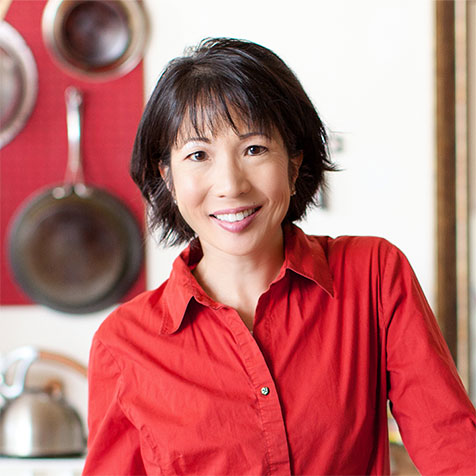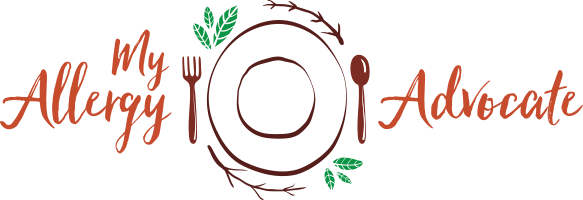Road trip | Canada | Travel | Food
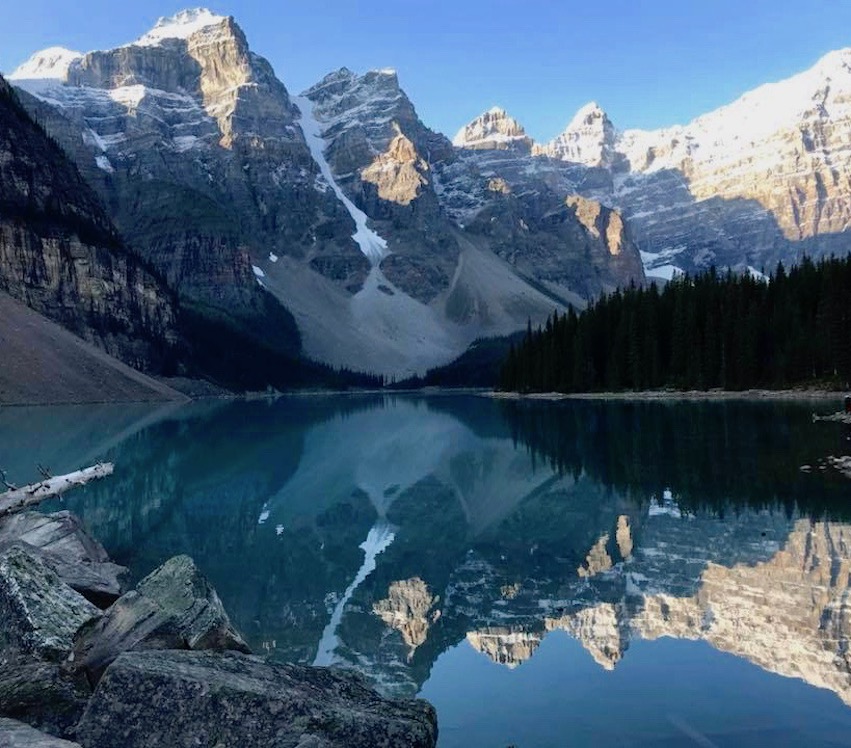
Lake Moraine outside of Banff in Alberta Canada calls thousands of visitors each year to its tranquil reflective waters in early morning light. Photo by Imei Hsu.
Do you like road trips to far away places? Do pictures of crystal clear mountain lakes and snow-covered peaks make you wish you could see these places for yourself?
In August 2017, my husband and I went to Iceland and drove along the southern end of the continent. That was a lot of kilometers of driving, plus a long flight there and back. This August 2018 into September, we drove to Vancouver, BC in our own car, then swapped it for a larger rental car to take us through the towns of Whistler, Sun Peaks, Jasper, Banff, and Calgary, drop the rental car there, fly back to Vancouver, and hop onto a Bombardier twin engine plane to the island of Haida Gwaii (formerly known as Queen Charlotte Island) to the edge of the world. While most people need only make sure they have the appropriate identification, money, and clothing for a two-week vacation with variable temperatures and climates, I had to also plan and pack for eating on the road with accommodations that did not always have a kitchen suite or even a microwave.
I just want to let you know, I did not starve. I did, however, eat out. Quite a lot, actually. I ate out more in two weeks than I do in the span of six months. But I also ate in, and snacked carefully to avoid any situation where I would be so hungry I might make a mistake or lower my guard while ordering food. And with food allergies, you know you don’t usually get a do-over, so mistakes are costly and just won’t do.
So let’s talk about road trip food on my vacation, and how you can start planning for yours.
Ready? Get set? Go!
Planning for Eating on the Road
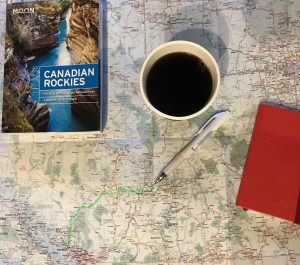
Fourteen days on the road is a long time, especially for people with food “issues”. Planning is critical. Photo by Imei Hsu.
Anyone with food restrictions in their diet understands that it takes some planning to feed yourself when you are away from your home base. It’s even more complex when you can’t keep your food cold for more than a few hours, if you need to fly somewhere with your food, or if you are limited in baggage or carry-on space.
Our Great Canadian Adventure had all three components during different parts of the road trip, and so I planned accordingly. To understand some of the options I had available to me, you can read my post about eating and travel tips, and my post about eating when on travel without a kitchen.
Because of where I am in the healing journey, I planned on a combination of dried foods and fresh foods I could eat for breakfast and snacks on the road, and counted on eating a simple dinner in restaurants in the towns we stayed in to provide allergen-free, AIP friendly meals. I made menus that looked something like this:
Breakfast: hot water with rice noodles (thermos), seaweed, dried bacon or dried beef jerky, broccoli, boiled egg
Snacks on the Road: gluten-free crackers, cashew nut butter and jam, fruit, and gluten-free bread with jam; a tin of pink salmon, if I could find it.
Dinner: sushi restaurant, well-rated restaurant serving meat, vegetables, rice, salads that included an option to add chicken, fish, or local meat.
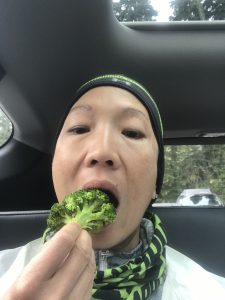
How hard can it be to get some vegetables with your meal? If it’s a potato restaurant, it’s a little harder than you think. Photo by Imei Hsu.
The biggest challenge was trying to order a restaurant dinner meal that did not include white potatoes as its solitary option for carbohydrates. As some of you know, white potatoes are a nightshade high in lectins, and those who choose to avoid white or yellow potatoes are often doing so because it causes joint inflammation or Grumpy Tummy issues. However, I find that after a couple of days of no carbohydrates, the rest of me feels grumpy. Carbs provide much of the satiation we experience with eating, and vegetables do have some carbohydrates. No carbs means walking away from a meal feeling like something is missing, and that’s because something IS missing! Where’s the carbs? Gimme some carbs!
As we drove deeper and deeper towards Alberta, most servers suggested beef with potatoes as their best Celiac-safe meal in their establishment. Alberta is, among many things, cow country, and absolutely everyone out there has heard about the famous Calgary Stampede. Not to be ungrateful and obnoxiously privileged, it doesn’t take many days before my body –and yours! –, no matter how much you like beef, will tire of eating a slab of grilled meat. Did I just say that? Yes, it is true. I craved vegetables, fresh lettuces, and robust cruciferous veggies not in small accoutrements, but more like the main dish without the usual dump truck of cheese, salt, or hidden in a nightshade-based soup, such as a creamy tomato basil soup. I also thought I would dumpster dive if it meant that I would come up with a handful of cooked rice or a sweet potato. When my husband found a decent sushi restaurant in Calgary that was walking distance from our hotel, I didn’t care how late it was. I was going to have sushi rice!
That being said, if you eat red meat, you have got to stop in at Chuck’s Steakhouse in Banff. Their Alberta wagyu steak dinner is a 20 ounce masterpiece that I double dog dare you to take home instead of devour right then and there. We watched two slender Japanese people eat their Flintstone-sized steaks without batting an eye or slowing down. I had mine with asparagus and broccoli instead of potatoes. There might have been a glass of wine with that steak. Just sayin’.
One thing that helped me on the road was to consider rotating main entrees every evening so that I made my way through fish and shellfish, poultry and eggs, beef and bison, and tried local elk and deer when it was offered. If the restaurant did not have rice offered, I skipped the potatoes eventually. I admit that I tried to eat the potatoes at the beginning of our trip, but very quickly my joints let me know that I could not afford to repeat that option.
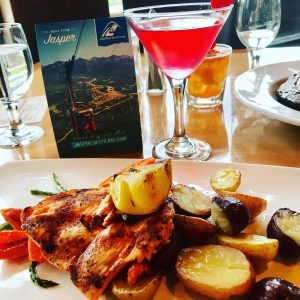
A final meal with potatoes in Jasper. Pan-seared salmon, roasted potatoes, and not a hint of alliums. Photo by Imei Hsu.
Needless to say, I rarely left a restaurant hungry. And in one case, I saved the bones from a meal and used them to make a broth for my brown rice noodles the next day.
The Little Things
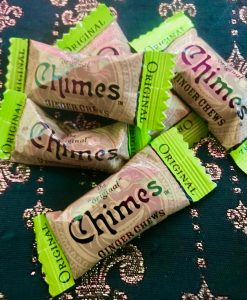
Chimes original flavor Ginger Chews have three ingredients: cane sugar, ginger, and tapioca starch. Photo by Imei Hsu
Every trip has at least one food discovery with it. In Iceland, I rediscovered tins of pink salmon, which worked great with a box of salad greens from a small grocery that catered to outdoorsy travelers. During our Great Canadian Adventure, I discovered frozen gluten-free bread from All But Gluten, and Chimes ginger chews. I placed the small loaf of bread in a portable and collapsible cooler and surrounded it with other cold items, which helped it stay fresh for the final days of its journey to Calgary. The Chimes ginger chews were absolutely marvelous, a bit of sweet with a bite, and perfect for hikes and long walks.
One type of store that I don’t see often on the U.S. Mainland (lower 50 states) are what Hawaii locals call crack seed stores. These stores have Asian-style snacks like ginger chews, black watermelon seeds, and salted sour plums known by its Cantonese name as Li Hing Mui. Instead of eating overly sweet candy bars for snacks, I often ate dried octopus and spicy dried cuttlefish. These childhood food memories are ones of normalized eating — didn’t everyone eat this way? It took awhile to realize that the occasional visit to the candy store down the street was the kind of snacks my friends ate. They were absolutely mortified to see me gobbling squid the way they sucked on a giant lollipop.
Yet every Canadian town on our road trip had a candy store filled with all the sugar

No persons were harmed in this candy store. Instead, the Milk Dud box is sealed, and the Meneke Neko lucky cat lunch box ended up coming along for the road trip as my non-food treat. Photo by Light and Lea on Instagram.
-laden options of a child’s sweet fantasy, and the Chimes ginger chews were the only ones I could safely have. Perhaps they will be handed out to the parents of kids with allergies this Halloween, as we will be putting out a teal pumpkin to alert food-allergic children of allergen-free options (including non-food treats).
My husband booked all the accommodations for our trip, and he did let me know that the hotel in Calgary would be one that had neither a refrigerator nor a microwave. After searching for a safe breakfast nearby, we ended up trying the breakfast served at the Fairmont. Both of us felt confident that because the Fairmont caters to the well-to-do business person and upscale travelers, I could get a safe meal.
If not for a very astute server, I would have eaten a few bites of my breakfast that actually had an error in it, one that would have caused me some pretty serious gut trouble. It really brings home this message that those of us with food “issues” cannot afford to let down our guard. I took the time to thank our server for catching the mistake, rather than only focusing on how the mistake was made in the first place. I moved on and so did she. And yet I’m willing to bank on it that the server thought about this close call for some time.
Food + Culture + Spirit = Haida Gwaii
While I cannot compare any of the amazing vacations I’ve been on with my husband against each other, the “edge of the world” island of Haida Gwaii in the most northern part of Western Canada before reaching Alaska is a show stopper. Not only are the people enriched with a long cultural heritage that I deeply resonate with, the land of trees, sea, and sky yields a unique food and eating experience that is rich in micronutrients as well as flavor.
As long as I stuck to eating natural, whole foods, I felt completely safe to eat during our three day tour. Packed lunches included a generous portion of unmarinated smoked salmon, rice, and vegetables. One of specially prepared meals included such delicacies as fried seaweed, fish roe, rice, and elk.

A totem stands on the grounds of the Haida Gwaii Hospital and Clinic in Masset. A blue painted robe on the shaman signifies a high honor for the healing of an important person. Photo by Imei Hsu.
Canadian government initiatives to assist First Nations people with lifestyle interventions regarding the return to a natural diet instead of a westernized processed food and high carbohydrate diet were put into place when First Nation peoples reported increases in Type II Diabetes as much as six times higher than that of the general Canadian population. But if you can imagine what the destruction of their culture did to their way of life, you might better understand how the Haida people went on a lengthy journey not only to reclaim their heritage, culture, and language, but also their food and their activities, such as totem carving and raising, and the making of 100 person boats and navigating the Hecate strait.
We stayed at Haida House in Tllel, an all-Haida staffed hotel with a conference room, social room, dining room, and grounds that lead out to East Beach on the strait that faces the mainland of Canada. While many of the foods in European and American meals were represented, there were fair representations of local berries such as huckleberry, and local seafood. When I saw one of our guides eating huckleberries off a bush, I did the same. When I saw plants that were used for medicines and teas, I inquisitively sniffed and broke off pieces for my evening tea.
While tourists will find it difficult to only eat local food while visiting Haida Gwaii, a longer stay as well as access to a kitchen makes it a possible way of eating. The fish are plentiful, and sea vegetables like kelp and seaweed are easily harvested. The Haida people had enough food to eat that they had extra time on their hands to develop carving, painting, and the weaving of cloth in patterns known only to their people. With time, encouragement, and a return to social eating in community centers, it’s possible that more of the Haida Nation will find value in eating off the land and sea in the way of their traditions.
This part of our road trip was the hardest one for me to say good-bye. I did not want to leave for the airport, as I felt so at home and at peace there. And I suppose that is as good as any sign can be that it is time to return home, bringing with us the stories and the experiences of being on the road.
Do you have special memories of road trips and meals you have eaten? I’d love to hear from you! Feel free to share, and let’s keep making food fun again, even on the road.
______________
Of note: I took many photos during our trip that have little to do with food. If you are interested in seeing those photos, be sure to check them out on My Allergy Advocate on Instagram.


